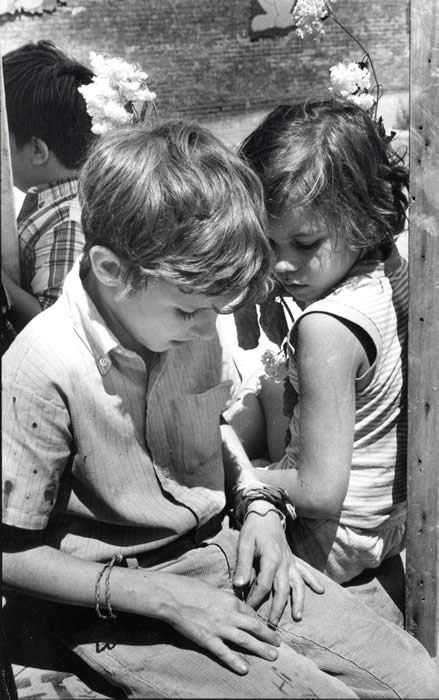Copyright © Diana Mara Henry / http://www.dianamarahenry.com
Diana Mara Henry is an American veteran photojournalist that began her career in the 1960s. I ran across her work while researching vintage playgrounds and reached out to her so I could get the deeper story behind a certain series of photographs she took in NYC of the Adventure Mountain Playground for the Lenox Hill Neighborhood Association in 1971. I was researching the social psychology of early playgrounds that brought different races, genders, and religions of children together to play and enjoy life and learning through movement. The 1971 images by Diana Mara Henry really captured the essence of an important part of the American playground and social history that needs to be highlighted again. History matters. Look back. Learn. Move forward.
“Probably should have begun long ago to share the stories behind the photographs for which I receive requests, with the often eloquent and fascinating voices of the folks who want to use them. I was so intrigued by Ron Jones’ genius in his field that I asked him to annotate these.”
-Diana Mara Henry, Photojournalist
DMH: “All of this innocence seems so far away….”
RJ: An important part of learning that is essentially disregarded in American education is the classical idea of “leisure” which comes from ancient Greece. This classical idea of leisure involves reflection time…for deeper thinking—and most importantly—for learning as in learning how to be a better person and citizen. This classical type of learning is very educational and does not have to involve books and formal school instruction.
In 1962, American outdoor recreation and PE leader Jay B. Nash wrote this introduction in “Trends in American Living and Outdoor Recreation” for the US Outdoor Recreation Resources Review Commission, “The use of leisure, intelligently and profitably, is the final test of a civilization.” Dr. Nash is important to reference because he was a master at elevating culture through physical activities. As Nash helped his students elevate culture, he also broke through cultural race barriers. Nash used to host a summer camp for university students. The outdoor education and recreation camp had both blacks and whites living in the same cabins and treated equally and respectfully–this was during the 1940s when such activities were sadly quite controversial in many settings. This relaxed and educational leisure setting in the outdoors changed racial relations for the better–this is an important lesson today in 2021…history is speaking…let’s listen.
In our current era where children need formalized “play dates” in order to make an appointment to play, and often under protective scrutiny of adults,—are we missing something as simple as relaxed space to think and learn? Ancient Greece would advise us to step back and think about it…deeply…over a period of relaxed time too.
References:
- Diana Mara Henry Photography
- Diana Mara Henry Spotlight: “Children at Play Photo Collection”
- “Adventure Playground: Tire Rope” Diana Mara Henry Photograph Profile
- “Adventure Playground: Sand Hill” Diana Mara Henry Photograph Profile
- Jay Bryan Nash Legacy: Health, PE & Outdoor Recreation (Dr. Roderick Nash Interview)
- “Playground Uses Scrap Materials” (New York Times, OCT 10, 1971)
- “Playadise Lost: Restoring Playgrounds & Building Your Own” (Ron Jones)
–Ron Jones, MS, Historical Kinesiologist, Physical & Health Educator
